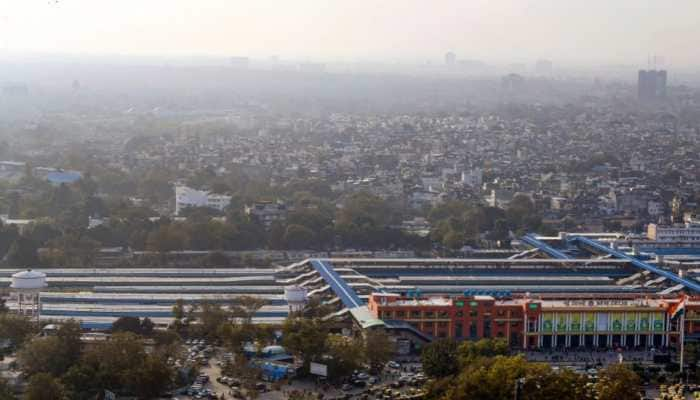Jupiter-Saturn conjunction on December 21: How and when to watch the celestial event
In what is being called the greatest celestial marvel in centuries, the Jupiter and Saturn planets will be at the closest possible distance on Monday, December 21.
- The planets Jupiter and Saturn will be at the closest possible distance to each other on Monday.
- Called as the 'great conjunction', it will be seen in the night sky between 6.30-7.30 PM.
- Such an event was last observed nearly 400 hundred years ago, in 1623 and the next one is likely to take place in 2080.
Trending Photos
)
New Delhi: The planets Jupiter and Saturn will be at the closest possible distance to each other on Monday (December 21, 2020), in what is being called the greatest celestial marvel in centuries. The great conjunction will be seen in the night sky on Monday between 6.30-7.30 PM.
To get a better view of the event, you will need binoculars or a place where there is a small telescope. This will not only give you a better view of the planets but the four moons orbiting around Jupiter.
Such an event was last observed nearly 400 hundred years ago, in 1623 and the next one is likely to take place in 2080.
On July 16, 1623, the two planets were 5’10” (five minutes 10 seconds) from each other compared to 6’06” of arc on December 21. There have been only two more instances where Jupiter and Saturn have come nearly as close as what we will witness this year.
An astronomer in the Planetary Science Division at National Aeronautics and Space Administration (NASA) Headquarters in Washington Henry Throop said, “The date of the conjunction is determined by the positions of Jupiter, Saturn, and the Earth in their paths around the Sun, while the date of the solstice is determined by the tilt of Earth’s axis. The solstice is the longest night of the year, so this rare coincidence will give people a great chance to go outside and see the solar system.”
The conjunction will also coincide with the December solstice, the shortest day of the year in the northern hemisphere and longest in the southern.
Though the plants will be apart, but due to the proximity they will appear as one big star, like the biblical Christmas star or the Star of Bethlehem, which appeared in the eastern sky when Jesus Christ was born.
As per NASA, Saturn will be slightly fainter as it will appear to be above the largest planet of our solar system towards the left. The positions will be reversed after December 21.
Meanwhile, Jawaharlal Nehru Planetarium in Bengaluru has made arrangements to watch the celestial conjunction of Jupiter and Saturn planets. "We have set up telescopes in our premises to watch the conjunction of Jupiter and Saturn on Monday evening if weather conditions permit," said the planetarium official in a statement.
Stay informed on all the latest news, real-time breaking news updates, and follow all the important headlines in india news and world News on Zee News.
Live Tv







)
)
)
)
)
)
)
)
)
)
